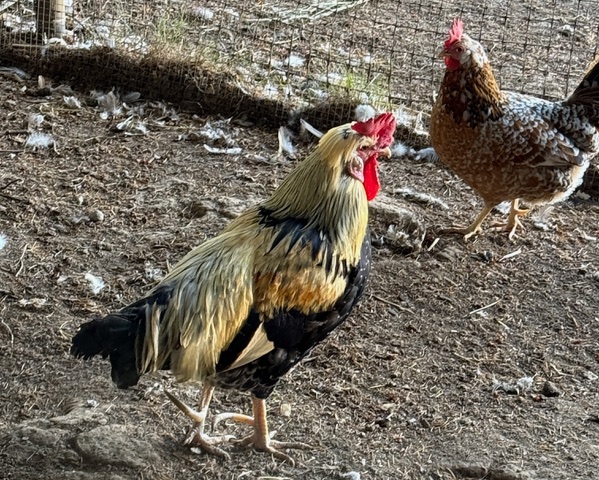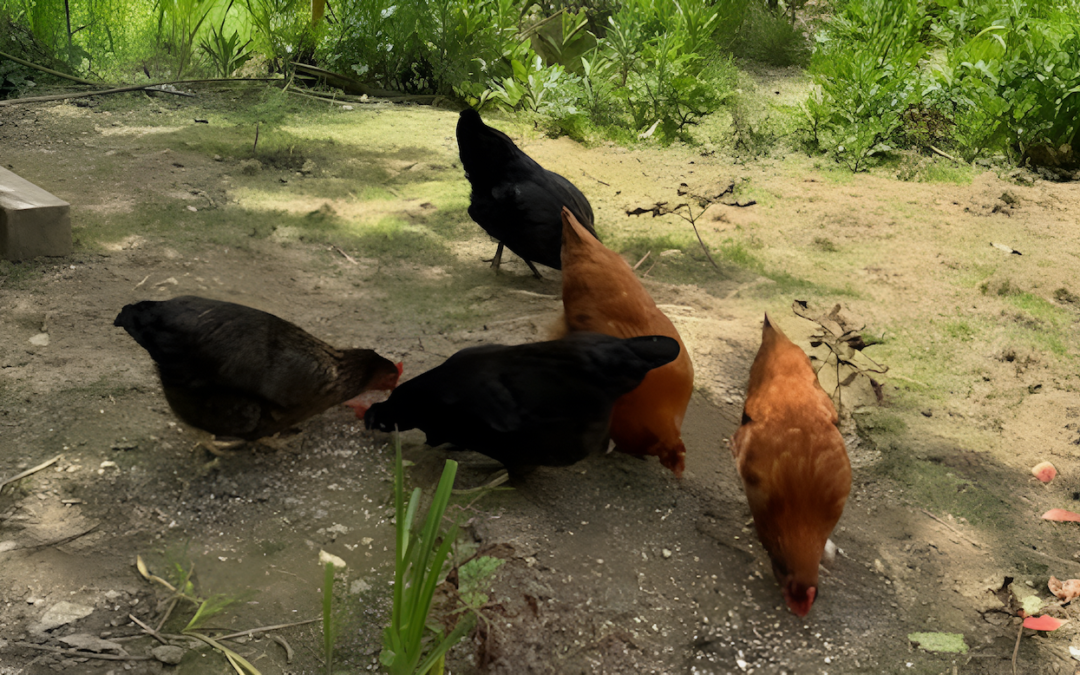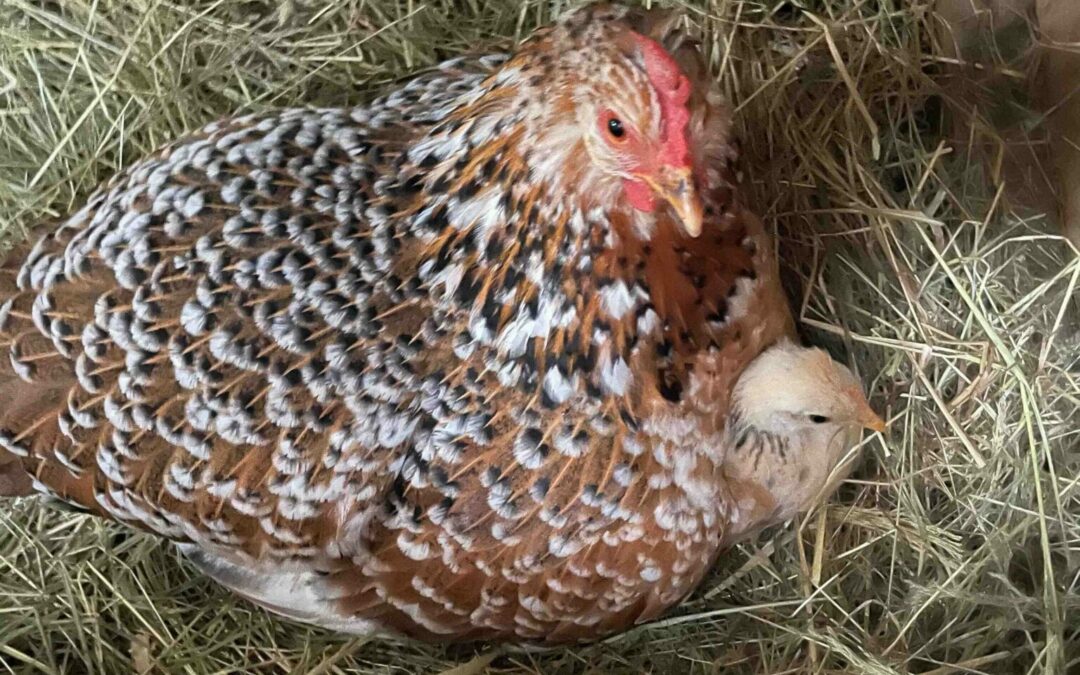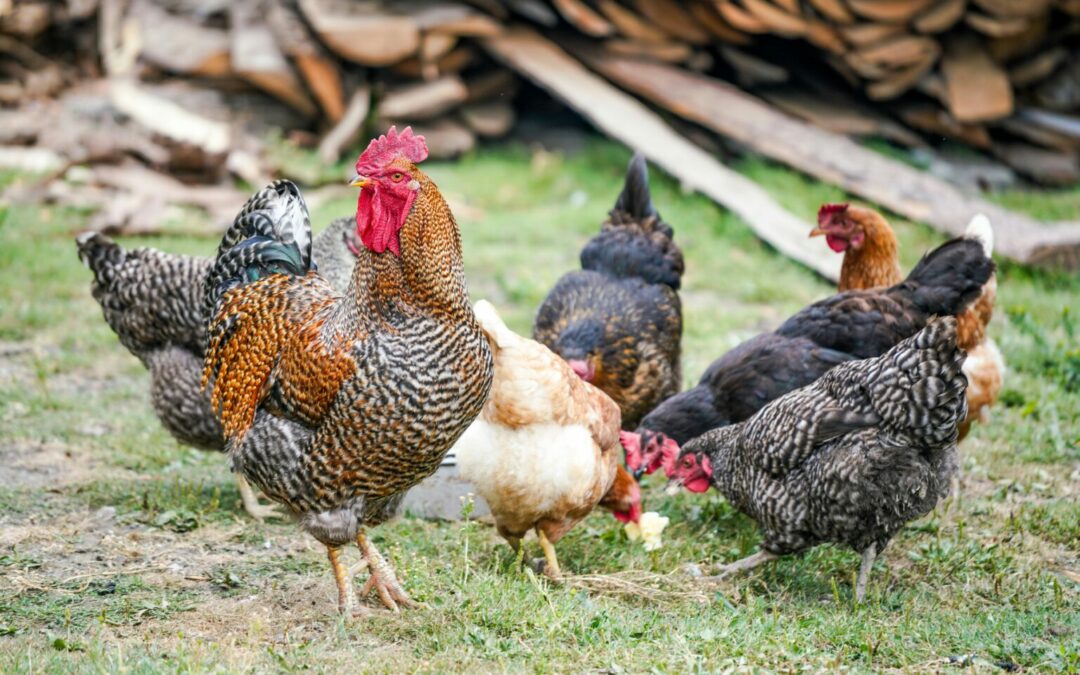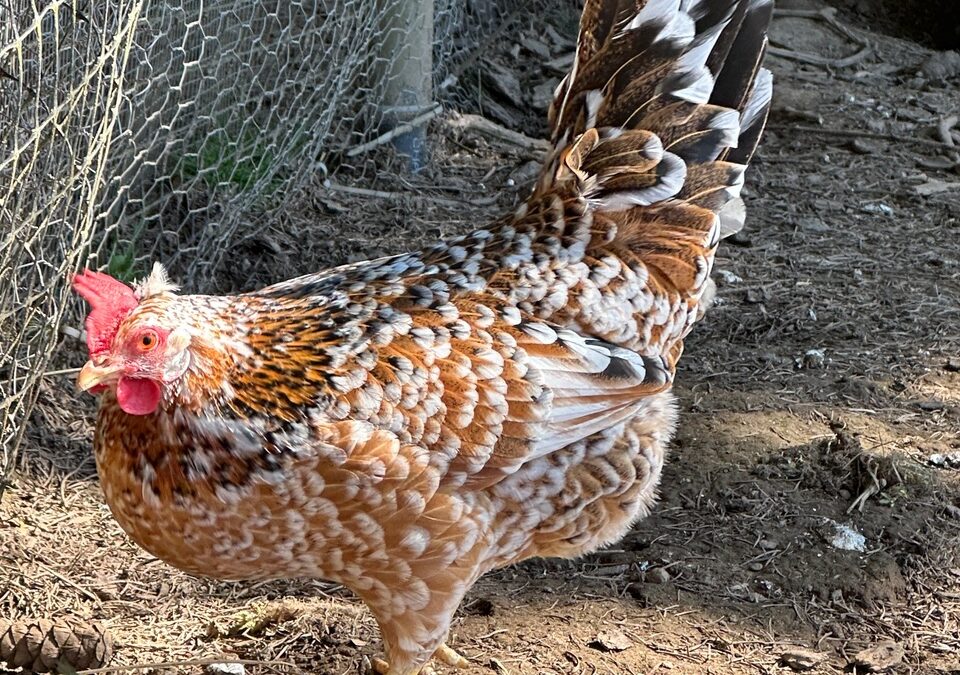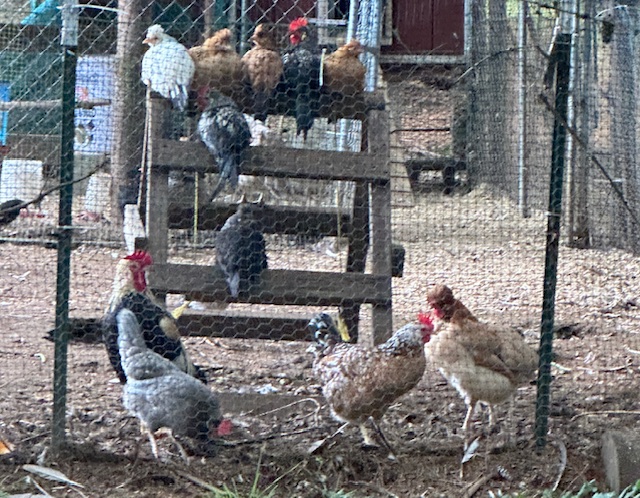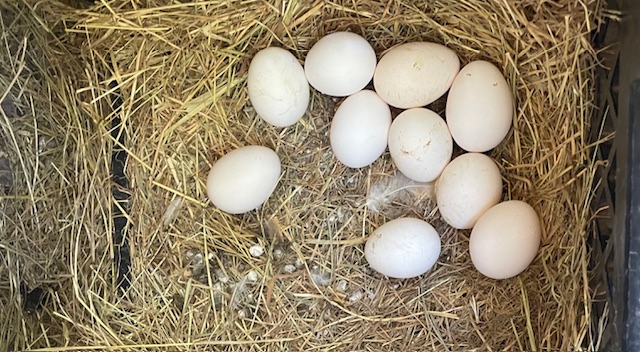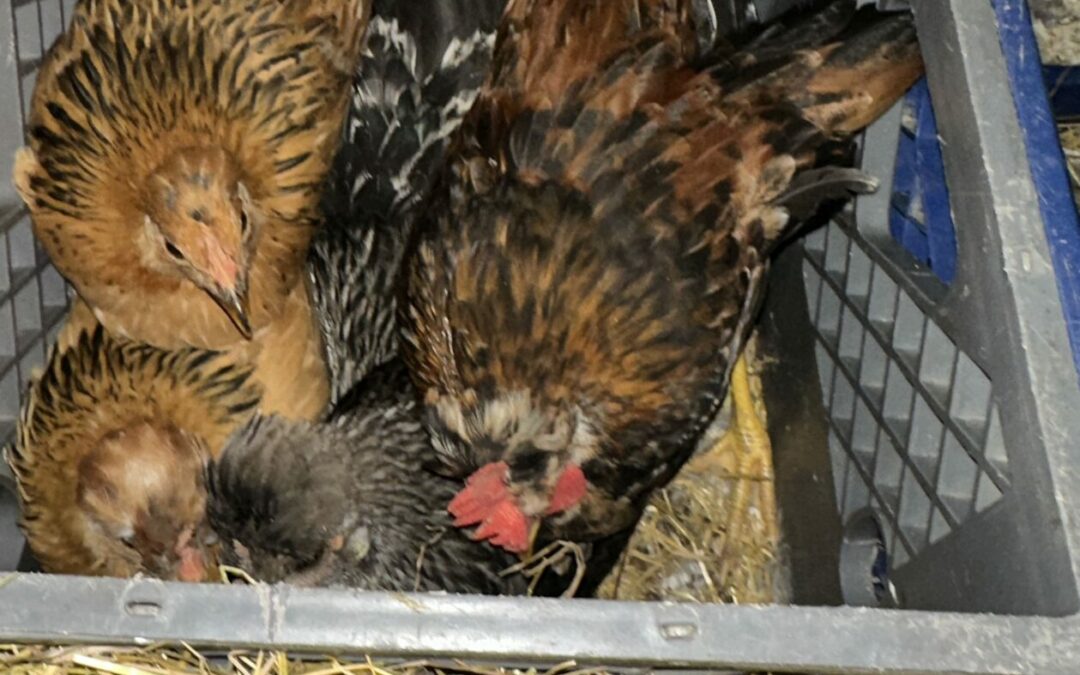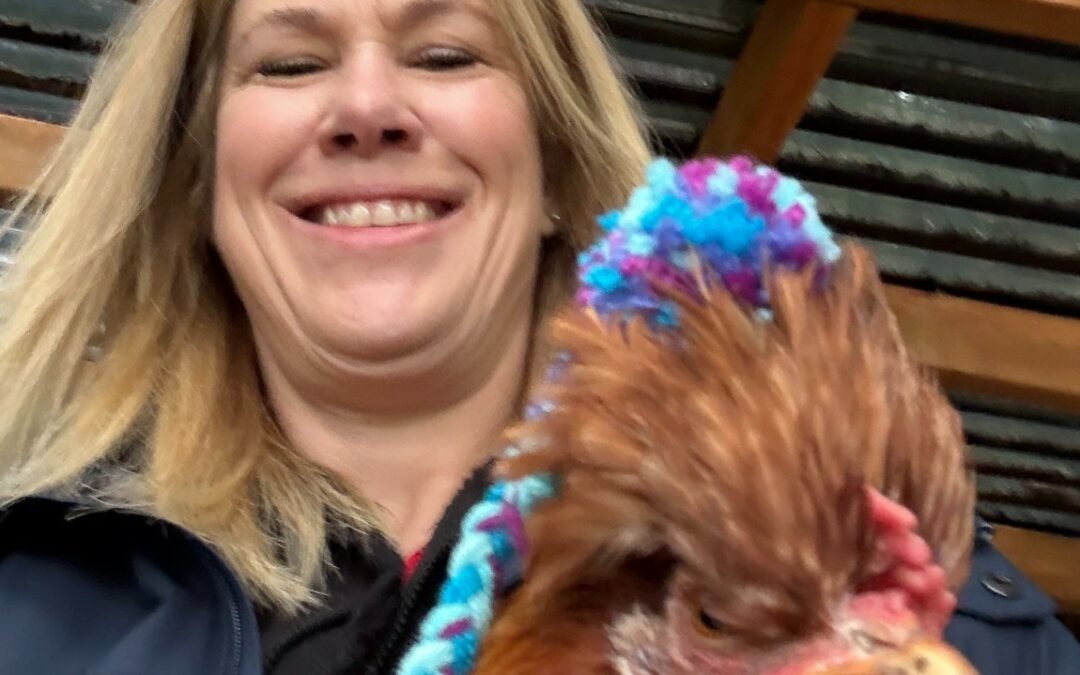
Selfies and Roosters
Our “Little Gray” hen hatched out five peeps in late June. Unfortunately, one of them had a bad leg, and while she could hop around, she couldn’t roost. After about eight weeks, we had to move her on to greener pastures. Of the remaining youngsters, it appears we have at least three roosters. About four weeks ago, I headed up to the coop for the weekly cleaning, and I found one of those cockerels (young roosters) hanging out in the coop. I kicked him out so I could clean, and as he ran down the ramp, all the other chickens started chasing him and pecking at him. When I intervened, he was crammed up in the corner of the run. I picked him up and found that he was pecked raw and nearly lifeless.
At this point, I decided he needed to be moved to the smaller coop just 20 feet from where I stood. All I needed to do was open the coop gate, walk the 20 feet to the other coop, open that gate, and put him inside. But this simple journey became a bit of an obstacle course, because I had two very interested retrievers who wanted to help. Now, if I had expected to be handling chickens and moving them from one coop to another, I wouldn’t have brought the dogs, but this was the situation I found myself in.
So, I stood there, contemplated the situation, and did what anyone would: I took a selfie. No, I did. But then I realized I was stuck. There was no way I would be able to handle this situation alone. I could either set the cockerel down and take the dogs up to the house, risking further attacks on the cockerel, or I could phone a friend. So I called Mike and asked for his help. He came up and was able to pull the dogs away so I could move the injured cockerel to the other coop.
I don’t know why all the chickens were picking on that particular cockerel. Even his three “hatch-mates” chased him around. That is one of the things I don’t like about chickens. They can be mean. They peck at each other. They don’t support each other. They are the antithesis of how I encourage my leadership teams to behave. And honestly, it makes me a little sad. I know it’s just in their chicken DNA, but why must they do that?
When implementing EOS, I work with the leadership teams to get them healthy. That means having uncomfortable conversations with one another, calling people out if they aren’t living by their core values, holding each other accountable, and caring so much about the company and its people that they will enter danger.
In his book Overcoming the Five Dysfunctions of a Team, Patrick Lencioni defines a team as a group of people who share common goals and the responsibilities and rewards of achieving them. However, according to Lencioni, not every group of people in an organization is really a team. They might have the same manager or work in the same department, but that doesn’t make them a team.
When implementing EOS, I work closely with an organization’s leaders, guiding them to become a true team. For them to succeed, they must embrace collaboration, accountability, and unity. My work is most rewarding when I witness this transformation—watching a group of individuals embark on their EOS journey and evolve into a cohesive, high-performing team.
I see leaders lean into the discomfort of holding each other accountable, emerging stronger and more united. They align around a shared vision, celebrate their wins together, and provide unwavering support during challenging times. It’s a privilege to witness teams navigate failures, rebuild together, and grow even stronger. I’ve also seen team members face personal struggles only to be lifted up by the care and strength of their team.
These moments of resilience, trust, and growth are what make my work so fulfilling. Watching leaders transform not just their businesses but also their relationships and personal lives is a constant reminder of the power of teamwork and shared vision.
Celebrating and supporting each other creates a team that is determined to succeed. As Lencioni says in his book The Five Dysfunctions of a Team (the main book that preceded the book mentioned above), “A healthy team can dominate any industry, at any time, against any competition.” If you sense your team isn’t as healthy as it could be, and you need help getting it where you want it to be, please get in touch with me. Together, we can transform your flock of leaders pecking at each other into a team of leaders who are working together toward a common vision.

